Monthly Archives: September 2024

 The Pennsylvania Railroad Company (PRR), known as the “Pennsy,” was a premier American Class I railroad founded in 1846 with its headquarters in Philadelphia, Pennsylvania. It got its name from the state where it originated. In contrast to other major eastern trunk lines, the Pennsylvania Railroad began operations later. A trunk line railroad is a railroad line providing basic nationwide transportation ties within a country or with neighboring countries. The Baltimore and Ohio, Erie, and New York Central Railroads all had origins dating back to the 1820s and early 1830s. The Pennsy emerged from Pennsylvania’s desire to remain economically competitive. It built a meticulously engineered route from Harrisburg to Pittsburgh and grew primarily through acquisitions. At the height of its operation, the PRR managed an extensive network of routes, catered to millions of passengers, and is often celebrated as the most illustrious of American railroads.
The Pennsylvania Railroad Company (PRR), known as the “Pennsy,” was a premier American Class I railroad founded in 1846 with its headquarters in Philadelphia, Pennsylvania. It got its name from the state where it originated. In contrast to other major eastern trunk lines, the Pennsylvania Railroad began operations later. A trunk line railroad is a railroad line providing basic nationwide transportation ties within a country or with neighboring countries. The Baltimore and Ohio, Erie, and New York Central Railroads all had origins dating back to the 1820s and early 1830s. The Pennsy emerged from Pennsylvania’s desire to remain economically competitive. It built a meticulously engineered route from Harrisburg to Pittsburgh and grew primarily through acquisitions. At the height of its operation, the PRR managed an extensive network of routes, catered to millions of passengers, and is often celebrated as the most illustrious of American railroads.
In the early 1840s, Philadelphia’s commercial significance faced threats from two fronts. The increasing trade through the Erie Canal directed a growing volume of commerce from the Central West to the northern seaboard. In addition, the burgeoning Baltimore and Ohio Railroad signaled a significant commercial future for Baltimore, Maryland, potentially eclipsing Philadelphia. The Baltimore and Ohio Company, demonstrating remarkable initiative, sought connections with Pittsburgh to reroute western trade away from eastern Pennsylvania. Additionally, Philadelphia’s financial reputation had been tarnished by recent turmoil. The Panic of 1837, which was the United States Bank’s clash with President Andrew Jackson, its subsequent defeat and failure as a state bank, and the resulting distress within local financial sectors, all contributed to the shift of the nation’s monetary hub to New York.
In 1847, the directors of the Pennsylvania Railroad appointed J Edgar Thomson, an engineer from the Georgia Railroad, to survey and build the line. He selected a path that followed the west bank of the Susquehanna River northward to its meeting with the Juniata River, then along its banks to the foothills of the Allegheny Mountains, culminating at what would become Altoona, Pennsylvania. To cross the mountains, the line ascended a moderate incline for 10 miles to a point where it spanned two mountain ravines by constructing a fill and curving the tracks along a 220-degree bend known as the Horseshoe Curve, which kept the grade below 2 percent. The summit was breached by the 3,612-foot Gallitzin Tunnels, after which the route descended to Johnstown on a gentler slope.
The Pennsylvania Railroad’s charter was expanded on March 23, 1853, permitting the purchase and bond guarantees of railroads in other states, limited by its capital stock percentage. The Pennsy supported several lines to attract more traffic. By 1854’s close, it had acquired stakes in the Ohio and Pennsylvania, Ohio and Indiana, Marietta and Cincinnati, Maysville and Big Sandy, and Springfield, Mount Vernon and Pittsburgh railroads, totaling $1,450,000 (equivalent to $49.2 million in 2023). It also backed the Steubenville and Indiana with a $500,000 bond guarantee. In 1856, it gained a majority interest in the Cumberland Valley Railroad and built more lines in Philadelphia. The Main Line of Public Works was bought in 1857 for $7,500,000 ($245 million in 2023).
The Empire Transportation Company, founded in 1865 by Joseph D Potts, evolved into a multi-modal freight transportation subsidiary of the Pennsylvania Railroad. It possessed oil tanker cars, transporting refined oil primarily for independent refiners during the period of John D Rockefeller’s Standard Oil refinery consolidations in the 1870s. Additionally, the company owned grain freighters on the Great Lakes and oil pipelines in Pennsylvania’s oil-rich areas. In 1877, when it sought to acquire and construct oil refineries, Standard Oil took ownership of the company.
The controlling, non-institutional shareholders of the PRR during the early 1960s were Henry Stryker Taylor, who was a part of the Jacob Bunn business dynasty of Illinois, and Howard Butcher III, a principal in the Philadelphia brokerage house of Butcher and Sherrerd (later Butcher and Singer).
On February 1, 1968, the Pennsylvania Railroad merged with its longtime arch-rival, the New York Central Railroad. The Pennsylvania Railroad absorbed the New York Central and eventually went by the name of Penn Central Transportation Company.
In 1969, the Interstate Commerce Commission (ICC) mandated the inclusion of the struggling New York, New Haven and Hartford Railroad (NH) into the system. A combination of factors such as inflation, mismanagement, severe weather conditions, and the retraction of a $200 million government-backed operating loan led Penn Central to seek bankruptcy protection on June 21, 1970. By May 1971, its passenger services and equipment 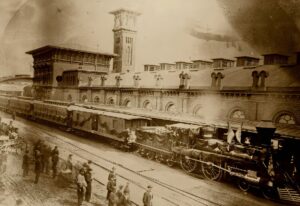
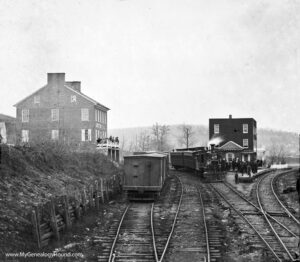 were handed over to a newly established government-funded entity known as the National Railroad Passenger Corporation, or Amtrak, to alleviate the financial burdens of passenger transport from Penn Central and other railroads. The Penn Central’s rail lines, including the former Pennsylvania Railroad tracks, were transferred to Conrail in 1976, with Amtrak ultimately acquiring the Northeast and Keystone Corridor lines.
were handed over to a newly established government-funded entity known as the National Railroad Passenger Corporation, or Amtrak, to alleviate the financial burdens of passenger transport from Penn Central and other railroads. The Penn Central’s rail lines, including the former Pennsylvania Railroad tracks, were transferred to Conrail in 1976, with Amtrak ultimately acquiring the Northeast and Keystone Corridor lines.
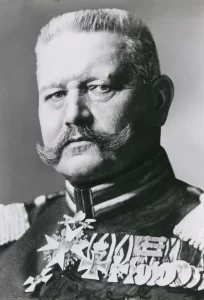 I think most of us have heard the name Hindenburg in some version or another. Whether it’s the airship disaster of 1937; the man himself, Paul von Hindenburg; or the Hindenburg Line of World War I, the name is known. Paul von Hindenburg was born into an aristocratic family on October 2, 1847, in Posen, Prussia, which is present-day Pozna?, Poland. His father was a Prussian military officer-turned-government official, who was granted a title of nobility in 1869; and his mother was the daughter of a doctor.
I think most of us have heard the name Hindenburg in some version or another. Whether it’s the airship disaster of 1937; the man himself, Paul von Hindenburg; or the Hindenburg Line of World War I, the name is known. Paul von Hindenburg was born into an aristocratic family on October 2, 1847, in Posen, Prussia, which is present-day Pozna?, Poland. His father was a Prussian military officer-turned-government official, who was granted a title of nobility in 1869; and his mother was the daughter of a doctor.
Hindenburg joined the Prussian army when he was 19, amid the Austro-Prussian War in 1866, which was also referred to as the Seven Weeks’ War…a significant event leading up to the unification of Germany. Hindenburg fulfilled the role of a staff officer in the Franco-Prussian War from 1870 to 1871 and ultimately rose to the rank of lieutenant general.
After a long military career, Hindenburg retired in 1911, at the age of 64. Then, with the onset of World War I in 1914, he was recalled to active service. As commander of the Eighth Army, he was elevated to the rank of field marshal and achieved a string of victories over the Russians on the Eastern Front, cementing his status as a national hero. One battle that stands out was the Battle of Tannenberg in Poland. Under his command, alongside his chief of staff General Erich Ludendorff, it became one of Germany’s most decisive triumphs of the war.
Anna von der Golz wrote a book called Hindenburg, in which she is quotes as saying, “Soon after the outbreak of war Hindenburg became Germany’s major symbol of victory against the enemy and of unity at home–a function traditionally performed by the Emperor in wartime, or perhaps on occasion by the Chief of the General Staff, but certainly not by the commander of a single German army.”
The phrase “Hindenburg will sort it out,” swiftly turned into a catchphrase, and depictions of the field marshal proliferated, she said. Hindenburg was named chief of the German General Staff by Kaiser Wilhelm entrusting him with the army’s command. Still, the Allies still managed to inflict a decisive defeat.
Following Germany’s defeat in World War I, Hindenburg retired from the military for the second time and entered politics. In 1925, at the age of 77, the “Victor of Tannenberg” was elected as the president of the democratic Weimar Republic (1919-1933), becoming Germany’s second president. He was re-elected in 1932.
In an effort to stabilize the region after the war and the harsh conditions of the Armistice of Compiègne, Hindenburg resorted to issuing presidential emergency decrees, not a real good move on his part. Nevertheless, it was permitted by the nation’s constitution in times of disturbance and economic distress. These decrees enabled him to bypass the German parliament’s consent, suppress his political adversaries, curtail free speech and other civil liberties, and permit military leaders to dictate foreign policy.
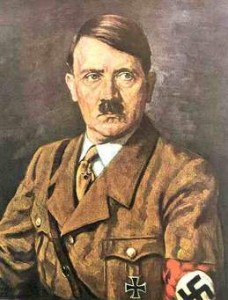
Hindenburg was initially a critic of Hitler and the Nazi Party, so at first, he declined to bestow upon Hitler the chancellorship he sought. However, under pressure from his conservative advisors and due to the rising influence of the Nazi Party, he eventually named Hitler as chancellor, reassured by his advisors that they could contain the Nazi program. That was likely his biggest mistake. Hitler swiftly utilized Hindenburg’s decree powers to enact several mandates, including the 1933 Reichstag Fire Decree, the Enabling Act, and the Law for the Protection of the People and the State.
As Hindenburg’s health declined, his appointment effectively granted Hitler dictatorial powers. Upon Hindenburg’s death at age 86 on August 2, 1934, Hitler declared himself the Führer of Germany. Hindenburg was buried alongside his wife, Gertrud von Sperling, who passed away in 1921, at the Tannenberg war memorial in Prussia. Their remains were later transferred to Saint Elizabeth Church in Marburg, Germany, in 1946.
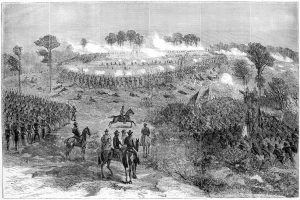
 In the latter part of September 1864, in the middle of the Civil War’s second half, the Union Army targeted Fort Harrison, a key Confederate stronghold. Capturing Richmond, Virginia, hinged on taking Fort Harrison, crucial to General Butler’s offensive strategy. As the most formidable segment of the Confederate defense line, Fort Harrison offered a clear view to the James River, rendering surprise attacks nearly impossible. Following intense summer skirmishes along Petersburg, Virginia’s earthworks, and a toll of around 27,000 casualties since June, a haunting silence had settled over the region. The II Army Corps, led by Major General Winfield Hancock and previously the backbone of Major General George G Meade’s Army of the Potomac, was now severely weakened. Positioned near Petersburg, the II Army Corps was tasked with monitoring and preventing any maneuvering of General Robert E Lee’s combat forces across the James River.
In the latter part of September 1864, in the middle of the Civil War’s second half, the Union Army targeted Fort Harrison, a key Confederate stronghold. Capturing Richmond, Virginia, hinged on taking Fort Harrison, crucial to General Butler’s offensive strategy. As the most formidable segment of the Confederate defense line, Fort Harrison offered a clear view to the James River, rendering surprise attacks nearly impossible. Following intense summer skirmishes along Petersburg, Virginia’s earthworks, and a toll of around 27,000 casualties since June, a haunting silence had settled over the region. The II Army Corps, led by Major General Winfield Hancock and previously the backbone of Major General George G Meade’s Army of the Potomac, was now severely weakened. Positioned near Petersburg, the II Army Corps was tasked with monitoring and preventing any maneuvering of General Robert E Lee’s combat forces across the James River.
At that moment, Major General Benjamin Butler knew he needed to devise a strategy to turn the tide. The pause in activity presented an ideal opportunity for action. Butler considered that during such lulls, there’s often a slight drop in vigilance—just enough, he surmised, for a surprise attack. With this in mind, Butler approached Lieutenant General Ulysses S Grant with a plan. The strategy involved relocating the Army of the James north of the James River to initiate an assault on the Confederate Outer Defenses near Richmond. The objective of the Federal Army of the James was to seize control of the road network southeast of the Confederate Capital, ultimately aiming to capture Richmond itself. 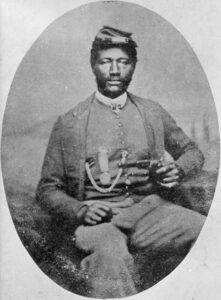
Before Petersburg, there was little activity, but the situation was changing rapidly in the Shenandoah Valley. The battle at Fisher’s Hill occurred on September 22, 1864, resulting in numerous casualties, notably the death of Brigadier General William Nelson Pendleton’s son. Grant’s staff officers were against the subsequent boat journey up the James River, yet Benjamin Butler persuaded Grant to deploy the Army of the James for a northern offensive. The strategy was straightforward. The Confederates underestimated the Federal Armies’ ability to mount a significant offensive towards Richmond from the north, as they had troops defending the earthworks there, leading them to allocate their forces elsewhere. Even with General Robert E Lee’s focus on the north, the Confederate forces in the outer defenses were critically understrength. It was believed that if a genuine threat emerged in that area, Confederate troops could swiftly reinforce the defenses before an attack could be initiated. On the night of September 28-29, 1864, Major General Benjamin Butler convened his top officers for a briefing on the planned movements of his army. Major General Edward O C Ord of the 18th Army Corps, Major General David B Birney of the 10th Army Corps, and Brigadier General August V Kautz of the Cavalry Division were present.
The strategy involved Major General Ord and the 18th Army Corps making an unexpected crossing of the James River at Aiken’s Landing, then advancing up Varina Road. Their goal was to destroy the Confederate bridges at Chaffin’s Bluff before heading up Osbourne Road towards Richmond. At the same time, the 10th Corps, led by Major General Birney, would push forward from Deep Bottom to seize New Market Heights. Moving northwest, Birney’s divisions would proceed up New Market Road towards the Confederate capital. Meanwhile, Brigadier General Kautz’s cavalry was to dash down Darbytown Road towards Richmond. Unfortunately for the South, on September 29, 1864, the plan partially unraveled when 2,500 Union soldiers from Major General Benjamin Butler’s Army of the James overwhelmed Major Richard Cornelius Taylor’s 200-man Confederate garrison, taking the fort in the Battle of Chaffin’s Farm. The operation saw the unfortunate death of Brigadier General Hiram Burnham, a brigade commander from Maine in the XVIII Corps. In his memory, Fort Harrison was subsequently renamed Fort Burnham after the Union forces assumed control.
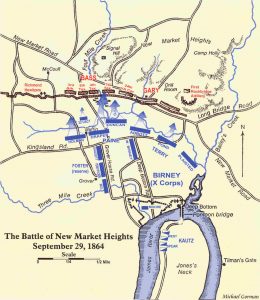
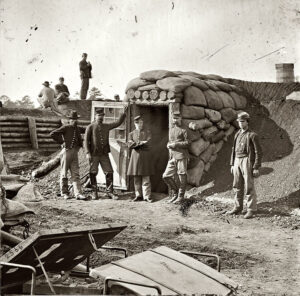 Ultimately, Fort Harrison stood as the sole victory of the day. Although the attempt to capture Richmond was unsuccessful, it quickly pointed out the region’s marked susceptibility. Recognizing the imminent threat to Richmond, General Robert E Lee then commanded a counterattack on September 30. The offensive was unsuccessful, and Brigadier General George J Stannard lost an arm during the resistance to Lee’s assault. This setback compelled the Confederates to reposition their defenses further west. Fort Harrison, also known as Fort Burnham, stayed under Union control until the war was over on November 6, 1865.
Ultimately, Fort Harrison stood as the sole victory of the day. Although the attempt to capture Richmond was unsuccessful, it quickly pointed out the region’s marked susceptibility. Recognizing the imminent threat to Richmond, General Robert E Lee then commanded a counterattack on September 30. The offensive was unsuccessful, and Brigadier General George J Stannard lost an arm during the resistance to Lee’s assault. This setback compelled the Confederates to reposition their defenses further west. Fort Harrison, also known as Fort Burnham, stayed under Union control until the war was over on November 6, 1865.

 My granddaughter, Athena Petersen, who is married to my grandson, Josh Petersen, is a sweet mother of two boys, with a third son on the way. She loves kids has worked in daycare for some time. Since their move to Lawton, Oklahoma, Athena got a job at Stepping Stones Daycare, starting yesterday. So, her birthday will find her settling into her new workplace. Athena and Josh with be working different shifts, so they will share the duties of caring for their sons, Justin and Axel. That’s the way things often go when both parents work. The good news is that it gives each parent their own time with the boys. Kids will do different things with their mom than with their dad, so there is a little variety. I’m sure the boys will like the different activities with each parent too.
My granddaughter, Athena Petersen, who is married to my grandson, Josh Petersen, is a sweet mother of two boys, with a third son on the way. She loves kids has worked in daycare for some time. Since their move to Lawton, Oklahoma, Athena got a job at Stepping Stones Daycare, starting yesterday. So, her birthday will find her settling into her new workplace. Athena and Josh with be working different shifts, so they will share the duties of caring for their sons, Justin and Axel. That’s the way things often go when both parents work. The good news is that it gives each parent their own time with the boys. Kids will do different things with their mom than with their dad, so there is a little variety. I’m sure the boys will like the different activities with each parent too.
Athena is a really upbeat person, and her personality makes people really like her right away. For her most 
 things have an exciting side to them. If things don’t have an exciting air about them, she puts excitement and joy into them. She is creative, and always has new little crafts for the kids to do. Right now, Athena, Josh, and the boys are staying with her brother, Jacob Salazar, his wife, Idalia, and their three little girls, so the kids all get in on things like finger paint projects, done in a big baggie so as not to be messy. It is a very cool idea, and one that doesn’t surprise me coming from Athena. She always comes up with cool things to make, and often chooses crafts that the little kids can easily participate in.
things have an exciting side to them. If things don’t have an exciting air about them, she puts excitement and joy into them. She is creative, and always has new little crafts for the kids to do. Right now, Athena, Josh, and the boys are staying with her brother, Jacob Salazar, his wife, Idalia, and their three little girls, so the kids all get in on things like finger paint projects, done in a big baggie so as not to be messy. It is a very cool idea, and one that doesn’t surprise me coming from Athena. She always comes up with cool things to make, and often chooses crafts that the little kids can easily participate in.
Athena is very family oriented. She and Josh like taking their boys to see things like museums, the Holy City of the Wichitas (a vision of Jerusalem and the Holy Land inspired by Reverend Anthony Mark Wallock), parks, and 
 aquariums. That was one thing that drew them to the Lawton area…all the activities there were to do. Now, she is expecting their third son, who will be named Cristian. They are getting very excited about their growing family. Athena is a great “boy mom” but hopes to add a girl to the mix one of these days. For now though, they are working on getting settled in their new city, while trying to stay in touch with the family left behind in Casper, Wyoming. It’s very important to Athena and Josh that their boys stay in touch with their grandparents back in Casper. They have been making Facetime calls so the boys can talk to grandparents. Of course, we miss them terribly, but we want them to be happy, above all. Today is Athena’s birthday. Happy birthday Athena!! Have a great day!! We love you!!
aquariums. That was one thing that drew them to the Lawton area…all the activities there were to do. Now, she is expecting their third son, who will be named Cristian. They are getting very excited about their growing family. Athena is a great “boy mom” but hopes to add a girl to the mix one of these days. For now though, they are working on getting settled in their new city, while trying to stay in touch with the family left behind in Casper, Wyoming. It’s very important to Athena and Josh that their boys stay in touch with their grandparents back in Casper. They have been making Facetime calls so the boys can talk to grandparents. Of course, we miss them terribly, but we want them to be happy, above all. Today is Athena’s birthday. Happy birthday Athena!! Have a great day!! We love you!!
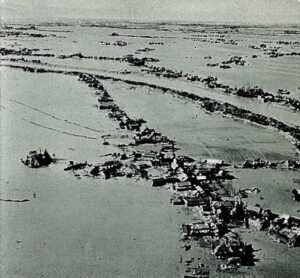
 Typhoon Vera, also known as the Isewan Typhoon, was an extraordinarily powerful tropical cyclone that hit Japan in September 1959. It became the most intense and deadliest typhoon to ever make landfall in the country, and it remains the only one to have done so as a Category 5 equivalent storm. The typhoon caused unprecedented catastrophic damage, severely impacting the Japanese economy, which was in the midst of post-World War II recovery. Following Vera, Japan underwent significant reforms in disaster management and relief operations, establishing a new standard for handling future storms. The country is still well known for its disaster preparedness.
Typhoon Vera, also known as the Isewan Typhoon, was an extraordinarily powerful tropical cyclone that hit Japan in September 1959. It became the most intense and deadliest typhoon to ever make landfall in the country, and it remains the only one to have done so as a Category 5 equivalent storm. The typhoon caused unprecedented catastrophic damage, severely impacting the Japanese economy, which was in the midst of post-World War II recovery. Following Vera, Japan underwent significant reforms in disaster management and relief operations, establishing a new standard for handling future storms. The country is still well known for its disaster preparedness.
Typhoon Vera formed on September 20 between Guam and Chuuk State, initially moving westward before shifting to a northerly path and reaching tropical storm status the next day. The storm then took a turned westward, rapidly intensifying to peak intensity on September 23 with maximum sustained winds that made it Category 5 hurricane. Maintaining its strength, Vera veered northward and made landfall near Shionomisaki on Honshu on September 26. Influenced by atmospheric winds, the typhoon briefly entered the Sea of Japan, then recurved eastward, making a second landfall on Honshu. Crossing over land significantly weakened Vera, and 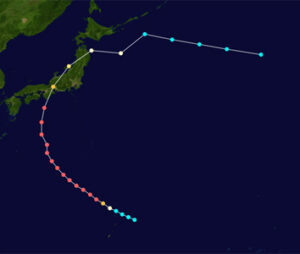
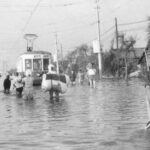 upon reentering the North Pacific Ocean that same day, it became an extratropical cyclone on September 27, with its remnants lasting two more days.
upon reentering the North Pacific Ocean that same day, it became an extratropical cyclone on September 27, with its remnants lasting two more days.
Although Vera’s path into Japan was accurately predicted, the limited telecommunications coverage, combined with the Japanese media’s lack of urgency and the storm’s severity, significantly hindered evacuation and disaster prevention efforts. The flooding from the storm’s peripheral rainbands started affecting river basins before the typhoon made landfall. As it hit Honshu, Vera unleashed a powerful storm surge, destroying many flood defenses, flooding coastal areas, and causing ships to sink. Vera resulted in damages totaling $600 million US dollars, which was equivalent to $6.27 billion US dollars in 2023. The death toll from Vera is uncertain, but current figures suggest the typhoon caused over 5,000 deaths, ranking it among the most lethal typhoons in Japan’s history. Additionally, it injured nearly 39,000 individuals and also displaced around 1.6 million people.
Immediately after Typhoon Vera, the Japanese and American governments launched relief operations. The typhoon’s flooding led to localized outbreaks of diseases such as dysentery and tetanus. These epidemics, along 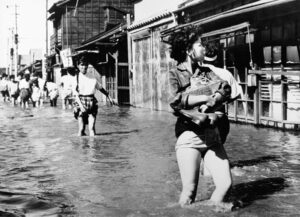
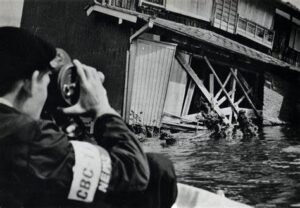 with obstructive debris, hindered the relief process. In response to the extensive damage and casualties caused by Vera, the National Diet, which is the national legislature of Japan, enacted laws to better support the impacted areas and reduce the impact of future disasters. This led to the creation of the Disaster Countermeasures Basic Act in 1961, which laid down guidelines for disaster response in Japan, including forming the Central Disaster Prevention Council.
with obstructive debris, hindered the relief process. In response to the extensive damage and casualties caused by Vera, the National Diet, which is the national legislature of Japan, enacted laws to better support the impacted areas and reduce the impact of future disasters. This led to the creation of the Disaster Countermeasures Basic Act in 1961, which laid down guidelines for disaster response in Japan, including forming the Central Disaster Prevention Council.

 My grandniece, Jolene Thompson has long been a Daddy’s Girl, and as such, she liked to do all the things her daddy, Tim Thompson was doing. They would go hunting, fishing, camping, and in general, all the “guy things” Tim was doing. Being a tomboy was great while Jolene was a little girl, but these days, Jolene is growing up, and whether her daddy likes it or not, she is quickly becoming a “girly girl” too. I’m sure she will still love doing those things with her daddy, because…well, he’s her daddy, but right before his eyes, Tim’s little tomboy is becoming a complicated mix of tomboy and girly girl…but then, isn’t that what all girls do at a certain age. These days, her favorite color is…you guessed it, pink, and she loves wearing dresses. Her bonus mom, Kellie Hadlock is very much a “girly girl” too, and Jolene wants to emulate Kellie in most of the things she does. She and Kellie have so much fun together.
My grandniece, Jolene Thompson has long been a Daddy’s Girl, and as such, she liked to do all the things her daddy, Tim Thompson was doing. They would go hunting, fishing, camping, and in general, all the “guy things” Tim was doing. Being a tomboy was great while Jolene was a little girl, but these days, Jolene is growing up, and whether her daddy likes it or not, she is quickly becoming a “girly girl” too. I’m sure she will still love doing those things with her daddy, because…well, he’s her daddy, but right before his eyes, Tim’s little tomboy is becoming a complicated mix of tomboy and girly girl…but then, isn’t that what all girls do at a certain age. These days, her favorite color is…you guessed it, pink, and she loves wearing dresses. Her bonus mom, Kellie Hadlock is very much a “girly girl” too, and Jolene wants to emulate Kellie in most of the things she does. She and Kellie have so much fun together.
This past summer, Jolene spent a good bit of the summer with Kellie. They had a blast. They attended family 

 parties and church, where Kellie is one of the lead singers. They shopped together, and really that is where Jolene expressed her girly interest to Kellie. Jolene has become such a big part of the Hadlock family. She loves having girl cousins to play with, and Kellie’s nieces, Aurora, Adelaide, and Mackenzie all truly love hanging out with Jolene whenever they can. Jolene and Kellie made several trips to Laramie and the three youngest girls even got matching t-shirts. Jolene is a sweet little girl, who loves other kids. She may be quiet around adults she doesn’t know well, but around kids, she is in her element, and she makes them feel special and happy. She has an
parties and church, where Kellie is one of the lead singers. They shopped together, and really that is where Jolene expressed her girly interest to Kellie. Jolene has become such a big part of the Hadlock family. She loves having girl cousins to play with, and Kellie’s nieces, Aurora, Adelaide, and Mackenzie all truly love hanging out with Jolene whenever they can. Jolene and Kellie made several trips to Laramie and the three youngest girls even got matching t-shirts. Jolene is a sweet little girl, who loves other kids. She may be quiet around adults she doesn’t know well, but around kids, she is in her element, and she makes them feel special and happy. She has an 
 infectious smile that makes everyone around her smile too.
infectious smile that makes everyone around her smile too.
While Jolene is quickly growing into a young lady, she has still kept parts of her daddy’s tomboy. She loves riding on the big equipment that her daddy knows how to run….and seriously, who wouldn’t. Jolene has also started wrestling, and she has a great talent for it. So much so, in fact, that she won first place in a competition. Jolene is a strong little girl, and she doesn’t let much get in her way. If she sets her mind to something, she does it. That is an amazing character trait, and one many people would be blessed to possess. Today is Jolene’s 9th birthday. Happy birthday Jolene!! Have a great day!! We love you!!
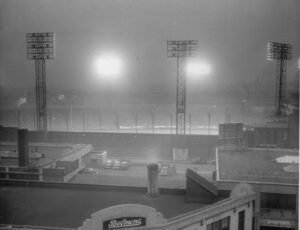
 During the summer and early fall of 1950, a series of fires in northern Alberta and northeastern British Columbia consumed around 4 million acres, making it the largest recorded fire in North American history. This event was known as the Chinchaga fire, and it generated smoke that ascended into Earth’s upper atmosphere and covered parts of Canada and the United States by late September, leading to the phenomenon known as the Great Smoke Pall. The dense, black smoke caused midday skies to darken, prompting some to speculate about a nuclear attack. Phone calls started coming in as the people panicked. The impact of the Great Smoke Pall extended as far as Europe.
During the summer and early fall of 1950, a series of fires in northern Alberta and northeastern British Columbia consumed around 4 million acres, making it the largest recorded fire in North American history. This event was known as the Chinchaga fire, and it generated smoke that ascended into Earth’s upper atmosphere and covered parts of Canada and the United States by late September, leading to the phenomenon known as the Great Smoke Pall. The dense, black smoke caused midday skies to darken, prompting some to speculate about a nuclear attack. Phone calls started coming in as the people panicked. The impact of the Great Smoke Pall extended as far as Europe.
The Chinchaga fire, also referred to as “Fire 19” or the Wisp fire, it is believed to have been started by humans near Fort Saint John in Alberta, Canada. During an unusually hot and dry spring, the fire ignited on June 1, 1950, but received little attention from the media. A policy had been put in place to ignore fires in remote areas, much like the “Let it Burn” policy of the 1970s, so authorities allowed it to burn freely. The fire grew into a massive inferno, raging all summer and spreading further with the changing winds and weather fronts.
In September 1950, winds intensified the flames, leading to a significant expansion of the fire. Thick smoke ascended into the atmosphere, encountered an atmospheric trough, and shrouded Ontario before moving towards Ohio and the eastern coast of the United States. On September 24th, the residents of Ontario observed strange hues in the sky. By midday, the smoke had obscured the sunlight, necessitating the activation of streetlights. The whole area took on an eerie tone.
That afternoon, smoke spread along the eastern seaboard. Pilots landing at New York City’s LaGuardia Airport faced zero visibility, necessitating instrument landings. By 4:00 pm, Pennsylvania residents observed unusual colors in the sky, which darkened completely within half an hour. The smoke was so elevated in the atmosphere 
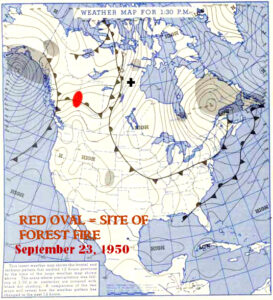 that it was odorless, and it sparked fears of a nuclear attack among some. Others speculated that an anticipated total lunar eclipse had prematurely begun. Reports of a purple moon abounded, and panic ensued as numerous people feared an apocalyptic event.
that it was odorless, and it sparked fears of a nuclear attack among some. Others speculated that an anticipated total lunar eclipse had prematurely begun. Reports of a purple moon abounded, and panic ensued as numerous people feared an apocalyptic event.
The smoke spread to Western Europe, where high-altitude smoke particles caused the sun to appear blue, intensifying fears of a nuclear attack. By late October 1950, rains and cooler temperatures ultimately put out the fire. The widespread panic induced by the Chinchaga fire prompted the Canadian Forest Service to implement new fire suppression techniques to avert a recurrence. All thoughts of a “Let it Burn” type policy were abandoned…for the time being anyway.
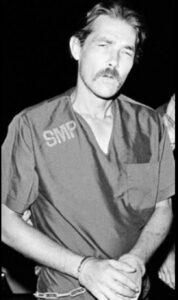 Jack Henry Abbott spent nearly his entire life behind bars. Sent to a Utah reform school at nine, he was later arrested and convicted of forgery shortly after his release. During his sentence at the Utah state penitentiary, he killed an inmate in 1966, claiming self-defense, which nevertheless resulted in an additional 14-year sentence. In 1971, Abbott fled from incarceration and committed a bank robbery in Denver, only to be apprehended later.
Jack Henry Abbott spent nearly his entire life behind bars. Sent to a Utah reform school at nine, he was later arrested and convicted of forgery shortly after his release. During his sentence at the Utah state penitentiary, he killed an inmate in 1966, claiming self-defense, which nevertheless resulted in an additional 14-year sentence. In 1971, Abbott fled from incarceration and committed a bank robbery in Denver, only to be apprehended later.
While incarcerated again, Abbott learned of Norman Mailer’s project on Gary Gilmore, who was awaiting execution in Utah, and started sending Mailer detailed letters about his alleged mistreatment behind bars. Mailer, who strangely thought that Abbott had talent as a writer, persuaded the New York Review of Books to publish some of his letters. Subsequently, Random House published Abbott’s book, “In the Belly of the Beast.” Pointing out Abbott’s potential in writing, Mailer proposed to hire him as a researcher, and with his backing, on June 5, 1981, Abbott was released to a halfway house in New York City.
Now released, and finding himself embraced by the New York literary scene, Abbott nevertheless felt more at ease among the petty criminals of the city’s Lower East Side. A mere six weeks post-parole, Abbott instigated a confrontation with waiter Richard Adan at the Bonibon restaurant, fatally stabbing him in the chest. Fleeing to a small village in Mexico, but his inability to communicate in Spanish hindered him there, so he was forced to return to the United States.
Deciding to return in a different area, he thought that perhaps he could escape detection. Nevertheless, an extensive search ensued, and Abbott was ultimately captured in the Louisiana oil fields after a two-month chase. The manhunt started when he killed Richard Adan at the Binibon restaurant in New York City on July 18 was finally over. At that time of the murder, Abbott was on parole, a privilege granted in part because of author  Norman Mailer’s support of his considerable writing talent, which convinced the authorities. Unfortunately for Adan, the writing skills Abbott had, didn’t do anything to curb his anger.
Norman Mailer’s support of his considerable writing talent, which convinced the authorities. Unfortunately for Adan, the writing skills Abbott had, didn’t do anything to curb his anger.
Incredibly, back in New York, Abbott received the minimum sentence for the murder of Adan. He was sentenced to a mere 15 years to life…partly due to Mailer’s plea for leniency to the court. Mailer believed that “culture is worth a little risk.” I seriously doubt that Adan or his family would agree. As a result of his ability to get off easy, Abbott gained further notoriety, and his book achieved bestseller status. In the end, I suppose one could say that justice was finally served when Abbott took his own life in prison on February 10, 2002.

 My nephew, Jason Sawdon is a great guy…just ask anyone who knows him. His sister-in-law, Chelsea Hadlock tells me that Jason is kind, helpful, and sister-in-law, Lindsay Moore says that he has a generous heart, which she believes to be straight from the Lord. Jason is always willing to help others with a variety of things. He helps out his church in Cheyenne, Wyoming, with their computer things, like streaming their services online, which is such an important part of church services these days. If people are sick, or just can’t get out of their home easily, they don’t have to miss out on the church service. Jason serves others gladly and with compassion. He is so handy and can truly figure anything out!!
My nephew, Jason Sawdon is a great guy…just ask anyone who knows him. His sister-in-law, Chelsea Hadlock tells me that Jason is kind, helpful, and sister-in-law, Lindsay Moore says that he has a generous heart, which she believes to be straight from the Lord. Jason is always willing to help others with a variety of things. He helps out his church in Cheyenne, Wyoming, with their computer things, like streaming their services online, which is such an important part of church services these days. If people are sick, or just can’t get out of their home easily, they don’t have to miss out on the church service. Jason serves others gladly and with compassion. He is so handy and can truly figure anything out!!
Jason is dependable. If Jason says he will be there to help…he will. This past week, he helped his father-in-law, Chris Hadlock with the electrical work in Chris’ new garage. Jason did a great job on the wiring for the garage. It will be inspected next week, and they are confident it will get the green light. He has a lot of talent when it comes to electricity and engineering…a great plus, in the “saving money” arena. If you can save money, it’s a good thing. Having that help within the family is awesome.

 Everyone tells me that Jason is also funny, but not in an obvious way!! You really can’t tell he’s joking unless you know him well!! Those are the best tricksters, because they will get you every time. Not everyone can tell a good joke or pull a really great prank with a straight face, and if you can’t, the prank with never go over. You have to have a “poker face” so to speak. Jason is quite a character, he and brings lots of fun and adventure to their lives!! Everyone feels blessed to have him as a brother-in-law, they love him very much. I don’t know anyone who wouldn’t agree with them on that.
Everyone tells me that Jason is also funny, but not in an obvious way!! You really can’t tell he’s joking unless you know him well!! Those are the best tricksters, because they will get you every time. Not everyone can tell a good joke or pull a really great prank with a straight face, and if you can’t, the prank with never go over. You have to have a “poker face” so to speak. Jason is quite a character, he and brings lots of fun and adventure to their lives!! Everyone feels blessed to have him as a brother-in-law, they love him very much. I don’t know anyone who wouldn’t agree with them on that.
In a “Wild Hogs” kind of time, Jason went on a motorcycle trip with his friends this summer. They went on some backroads trails across the state of Wyoming. They had a great time. Now, I don’t know if they got into as much mischief as the original “Wild Hogs,” but I’d say probably not. Jason, being a Wyoming 
 Highway Patrol Lieutenant, would be very unlikely to get into any trouble, and my guess is that at least some of his friends are also law enforcement, so…getting in trouble is not an option, Haha!!
Highway Patrol Lieutenant, would be very unlikely to get into any trouble, and my guess is that at least some of his friends are also law enforcement, so…getting in trouble is not an option, Haha!!
My sister, Allyn Hadlock, Jason’s mother-in-law, like every mom, takes a different view about what traits are most important in her son-in-law, and Jason has gained her approval in every area. He is a great dad and husband. He is always happy to indulge, his wife, Jessi’s whims!! He’s a great guide to their daughter, Adelaide and loves her so much!! They have a lot of fun as a family, camping, traveling, or just time at home hanging out together. Allyn says, “We are very blessed to have Jason in our family!!” Today is Jason’s birthday!! Happy birthday Jason!! Have a great day!! We love you!!

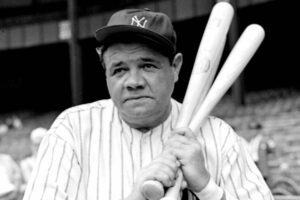 My dad, Al Spencer, and my niece, Liz Masterson, as well as other of my family members New York Yankees baseball team. Of course, lots of us know about the famous, Babe Ruth and his historic baseball abilities…specifically his famous records, such as an astonishing 56 major league records at the time of his retirement in 1935, including the most revered record in baseball…714 homeruns. Ruth was the first player in baseball history to hit 700 home runs, and he won seven World Series titles, including four with the New York Yankees. His record was the reason that Yankee Stadium was called “the house that Babe Ruth built.”
My dad, Al Spencer, and my niece, Liz Masterson, as well as other of my family members New York Yankees baseball team. Of course, lots of us know about the famous, Babe Ruth and his historic baseball abilities…specifically his famous records, such as an astonishing 56 major league records at the time of his retirement in 1935, including the most revered record in baseball…714 homeruns. Ruth was the first player in baseball history to hit 700 home runs, and he won seven World Series titles, including four with the New York Yankees. His record was the reason that Yankee Stadium was called “the house that Babe Ruth built.”
Of course, as we all know, all good things must come to an end, and the old Yankee Stadium was no exception. The Stadium with its unique design, such as a short porch in right field and covered seats in deep center opened in 1923. The beloved stadium was the scene of scores of Major League Baseball’s most famous moments, including Ruth’s first home run in the stadium on April 18, 1923, Reggie Jackson’s three home-run game to close out the 1977 World Series, and Aaron Boone’s Game 7 walk-off home run in the 2003 American League Championship Series against the Boston Red Sox.
Now, the stadium was getting old, and finally, on September 21, 2008, the stadium witnessed its final game being played. I’m sure it was a sad moment for many Yankees fans. To think that the iconic stadium would cease to exist most likely brought tears to the eyes of many loyal fans. Thankfully, the stadium went down with a win against the Baltimore Orioles, 7-3. Future Hall of Famer Mariano Rivera closed the game with a perfect ninth inning. Who could have asked for anything more…other than maybe not closing down the stadium. Yankees pitcher, Andy Pettitte said, “The way I feel emotionally right now and just physically so drained, it feels like a huge postseason win for us.”
The stadium would go out in typical reverence. The Yankees hosted a pre-game ceremony, allowing fans and former Yankee legends to walk the hallowed grounds a final time. Julia Ruth Stevens, Ruth’s daughter, threw out the ceremonial first pitch as the scoreboard flashed “To Be Continued…” and a photo of “The Bambino” winking. While the iconic final game meant a lot to many people, it was ultimately meaningless in the standings for the 2008 Yankees, who in an ultimately underwhelming season, would miss the playoffs for the first time in more than a decade. But veteran Yankees noted a playoff-like atmosphere. Even some of the retired Yankees, such as Bernie Williams, described pre-game jitters, saying, “I feel as nervous as I was before a playoff game.”
In an effort to encourage the fans who were sad to see the old stadium go, Yankees captain Derek Jeter told the New York faithful to bring the same energy to the “new” Yankee Stadium the next season. “We are relying on you to take the memories from this stadium, add them to the new memories to come at the new Yankee Stadium, and continue to pass them on from generation to generation,” he said. While the 2008 Yankees couldn’t pull off a trip to the playoffs, the 2009 Yankees managed to win another World Series…the fifth and final one of Jeter’s historic career. As for the old Yankee Stadium, it was demolished in 2010, and the site was converted into a public park called Heritage Field. Heritage Field is located on the same plot of land previously occupied by the original Yankee Stadium. It was finally completed in 2012. In a strange twist, there is very little recognition of the history of the ballpark that once stood there. There are only four benches and numerous 
 pavers that list various events that occurred at Yankee Stadium. The site has no featured plaque which describes exactly what was on this spot previously. As to the original Yankee Stadium, the only thing remaining is a large piece of frieze, located in what was the outfield. Heritage Field is nice, but there is a sense of something missing, because of the lack of enough recognition of Yankees baseball history.
pavers that list various events that occurred at Yankee Stadium. The site has no featured plaque which describes exactly what was on this spot previously. As to the original Yankee Stadium, the only thing remaining is a large piece of frieze, located in what was the outfield. Heritage Field is nice, but there is a sense of something missing, because of the lack of enough recognition of Yankees baseball history.

